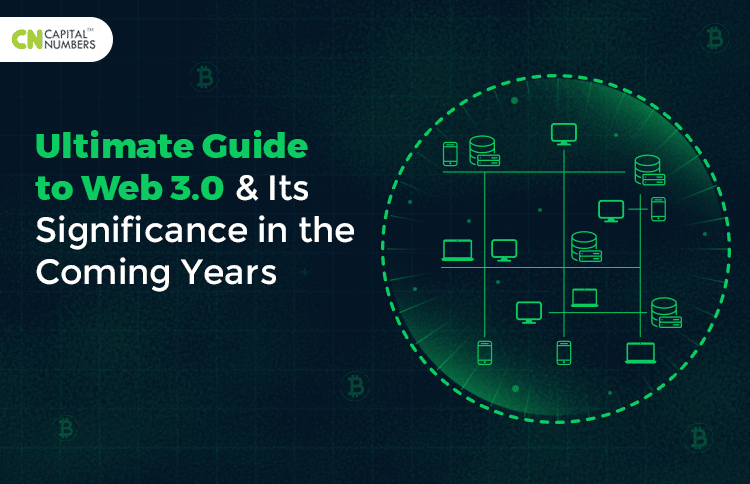Ultimate Guide to Web 3.0 & Its Significance in the Coming Years
Table of Contents
Imagine a progressive internet type that processes information with near human-like intelligence and offers a more customized browsing experience. A kind of actionable intelligent web that comprehends everything you convey accurately and provides information tailored to you. We are indicating toward Web 3.0 technology. Some leading tech experts and blockchain enthusiasts call it the future of the web. Software development companies are exploring the vast potential of this intelligent technology by building Web 3.0 applications to improve communication between users.
Web 3.0 technology is the upcoming third iteration of the internet. Here the data is interconnected in a decentralized way to deliver the most accurate and relevant search result to the end-user. With web 3.0 technology, websites and applications will process information with near-human-like intelligence using technologies, including machine learning (ML), Big data, decentralized ledger technology (DLT), etc.
This new evolution of the internet is based on two cornerstones, semantic web and artificial intelligence. Tim-Berners-Lee originally coined the term Semantic web for web 3.0. He said that the Semantic Web is designed to automatically interface with systems, people, and devices, involving humans and machines in content creation and decision-making. In short, Web 3.0 enables the distribution of highly tailored content to the users, creating a richer overall experience in terms of browsing and utility.
Regarded as open, trustless, permissionless, and ubiquitous, Web 3.0 is power-packed with valuable features. Let’s understand these critical features below.
Key Features of Web 3.0
- Open – It’s ‘open’ as it is built from open-source software developed by an open and accessible community of developers and accomplished in full view of the world.
- Trustless – The network offers autonomy to participants to interact publicly and privately without a trusted intermediary.
- Permissionless – Anyone, including users and providers, can participate without permission from a governing organization.
- Ubiquitous – Web 3.0 will allow internet availability to all of us, at any time and from any location.
Examples of Web 3.0 Applications
Two famous examples of applications that use Web 3.0 technologies are Siri and Wolfram Alpha.
Apple’s Siri
Siri is Apple’s voice-controlled AI assistant that uses speech recognition and Artificial Intelligence to communicate with other assistants, share information through linked blocks, and immediately come up with helpful search results. Earlier Siri could only perform simple commands, including reminders and directions. But, over the years, Siri has expanded its capabilities using voice recognition software, a vital component of web 3.0 technology, and can perform complex commands. Similarly, other AI assistants such as Amazon’s Alexa and Samsung’s Bixby can understand complicated “where, how to, why,” etc., requests and deliver you the perfect results.
Wolfram Alpha
Wolfram Alpha is a computational knowledge engine that responds to users’ queries directly by computation instead of giving a list of webpages as search engines do. For instance, if you want a practical comparison of two countries like England vs. Brazil. In this case, Google will give the most popular search result that may not be related to your query. On the other hand, Alpha would develop a helpful, relevant result of detailed comparison between the two countries. That’s how Web 3.0 wins over Web 2.0.
Key Reasons Why WEB 3.0 Will Thrive in Future
- Reduced reliance on centralized repositories, helping avoid data leakage and hacking.
- More personal and customized browsing experience as most users prioritize customized browsing web encounters.
- More relevant and better search assistance as AI, semantics, and blockchain power it.
- Reduced dependency on third parties or intermediaries, helping businesses to remove rent-seeking intermediaries and giving value directly to the providers and users in a network.
- Rise in peer-to-peer connectivity, enabling humans, businesses, and machines to share more data with robust security.
Wrap Up
The future of web 3.0 looks promising as it leverages Artificial intelligence, machine learning, and blockchain to assist users with the most accurate results of their search queries. With web 3.0, the users get complete ownership and privacy of their information. In addition, the users also benefit from decentralized data storage which ensures data accessibility to them even in the event of server failures.
So, do you want to unleash these countless benefits of Web 3.0 applications? Capital Numbers, a leading digital transformation consulting company, can help you build immersive and interactive web 3.0 applications, leading to better collaboration. Book a call with our experts to know more about our services.














